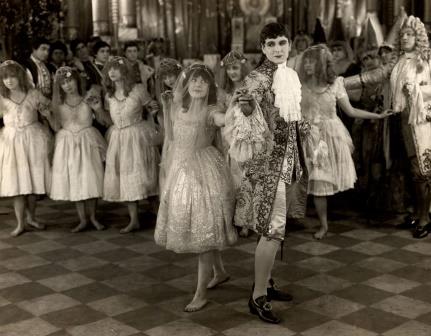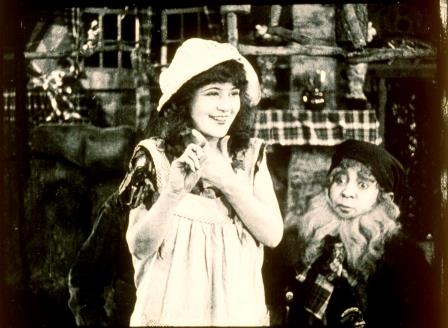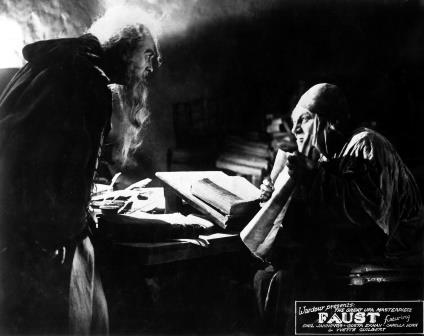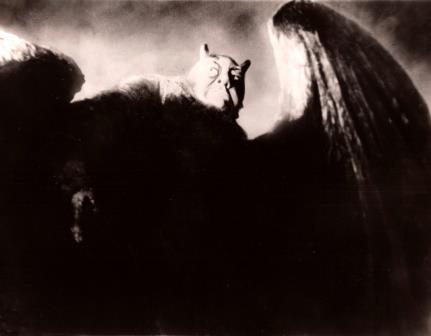Every now and then it helps to revisit a classic work of art from a different perspective than the one you've grown used to. After witnessing the American Repertory Theatre's new production of The Glass Menagerie (starring Cherry Jones, Zachary Quinto and Celia Keenan-Bolger), Ben Brantley wrote a fascinating ArtsBeat column for the New York Times entitled "Theatre Talkback: Old Works, Born Anew." That very same day, the Hollywood Reporter published an article entitled "I Was Rob Lowe's Snow White: The Untold Story of Oscar's Nightmare Opening."
These articles only served to reinforce the underlying message of J.C. Lee's new play, Luce, which was recently featured as part of the Aurora Theatre Company's series of new play readings for its Global Age Project. An extremely talented and prolific young playwright, Lee has found a provocative new way to ask theatregoers the age-old question: "How well do you really know someone you love?"

Playwright J.C. Lee as a "gay bandit"
The San Francisco Silent Film Festival recently offered audiences a chance to wonder just how well they knew two classic tales which, over the years, have acquired so many cultural imprints and branding opportunities that people assume they know these stories upside down and inside out. As audiences discovered while seated in the Castro Theatre, such is not always the case.
* * * * * * * * * *
The original version of Snow White was first published 200 years ago by the Brothers Grimm in 1812. Since then, the fairy tale has appeared in numerous versions.
On October 31, 1912, a Broadway play entitled Snow White and the Seven Dwarfs premiered at the Little Theatre with Marguerite Clark starring as the titular princess. While most people are familiar with Walt Disney's 1937 version of Snow White and the Seven Dwarfs (which was the first full-length cel animated feature film), the original Broadway production served as the inspiration for 1916's silent film version of Snow White (also starring Marguerite Clark).
Walt Disney saw the 1916 silent film version when he was a 15-year-old newsboy. Its enchanting prologue begins with a Santa Claus-like figure placing a series of dolls on a dining room table. The dolls magically come to life and enact the story of Snow White.
There are some unexpected laughs for modern audiences early in the film when Prince Florimond (Creighton Hale) arrives at the court to request his cousin's hand in marriage. The audience roared when the evil Queen Brangomar (Dorothy Cumming) noted that the Prince was so much younger than her. After insisting that Florimond wait a year before returning to her castle to claim and marry Snow White, Brangomar tersely explained the child's sudden absence by claiming that "she's been sent to a boarding school for backward princesses."

Marguerite Clark as Snow White with Creighton Hale
as Prince Florimond in 1916's Snow White
The silent version of Snow White does a beautiful job of capturing the young maiden's innocence and generosity of spirit. Is it any wonder that, when discovered sleeping by the seven dwarfs, one of them comments "I don't know if girls can talk."

Snow White (Marguerite Clark) with one of the dwarfs
A restored print of the entire 1916 film has recently been uploaded to YouTube by the Cinema History Channel. You can watch it in its entirety below:
* * * * * * * * * *
Most of my experiences with the Faust legend have been through opera. These include:
- Charles Gounod's five-act version of Faust, which premiered in Paris on March 18, 1859.
- Arrigo Boito's only opera, Mefistofele, whose world premiere was conducted by the composer at La Scala on March 5, 1868.
- Ferruccio Busoni's opera, Doktor Faust, which premiered in Dresden on May 21, 1925.
Back in the late 1960s, when I first started attending opera, Gounod's Faust was frequently performed by the Metropolitan Opera and the New York City Opera at their new homes in Lincoln Center. The New York City Opera created a new production of Boito's Mefistofele for Norman Treigle, which became a high point of the American basso's career. In 1989, Sam Ramey starred in Robert Carsen's brilliant production of Mefistofele that was televised over PBS and will be revived this fall at the San Francisco Opera).
In 1986 I had a curious opportunity to experience all three operatic treatments of the Faust legend. That fall, the San Francisco Opera revived Wolfram Skalicki's production of Gounod's Faust with Francesca Zambello directing a cast headed by Justino Diaz, Luis Lima, Alan Titus, and Mary Jane Johnson. The New York City Opera revived the famous Tito Capobianco production of Mefistofele with John Cheek in the title role, Robert Grayson as Faust, and Marianna Christos pulling out all stops for Margherita's mad scene.
Earlier that year I had suffered through a bizarre production of Doktor Faust staged by David Pountney at the English National Opera (on loan from the Deutsche Oper Berlin) which managed to be both boring and unnerving. In my review for the Bay Area Reporter, I wrote:
"Stefanos Lazaridis's dangerously shaky and decidedly clumsy sets included long banks of steel file cabinets which were precipitously perched above the stage and then slanted down toward the footlights at an angle of nearly 45 degrees. Below this unit piece, people disappeared into a steeply-raked, slatted floor which rested above a series of trapdoors. Although there were Nazis, an old car, and three mysterious students from Krakow in this production, I will readily confess that this was one instance where I didn't have the slightest fucking idea of what was happening onstage. The only thing of which I can be sure is that numerous chairs in London's ancient Coliseum Theatre fell apart as soon as their occupant sat down in them that night. So, for that matter, did the guiding concept behind this unfortunate and extremely bizarre production."
San Francisco's Silent Film Festival presented F.W. Murnau's 1926 version of Faust (the last film he made in Germany) as the grand finale of its Winter program. Those familiar with Murnau's work from films like 1927's Sunrise: A Song of Two Humans know him to be a master of lighting and shadow. In the following clip from Faust, one can see how he has used smoke and fire for dramatic effect.
Murnau's adaptation of Goethe's Faust also adds a motivating factor that is missing from the Gounod and Boito operas. Early in the film, Mefistofele and an Archangel are seen arguing over who rules the earth. When the Archangel mentions Faust, he inspires Mefistofele (who spreads an ominous cloud that carries the plague throughout Faust's village). Frustrated by his inability to help villagers whose families are dying from the plague, Faust then summons Mefistofele (who is only too happy to indulge the aged philosopher in exchange for Faust's soul).

Murnau's film is a filled with haunting images that range from terrified faces to a giant Mefistofele hovering over a miniature village. Emil Jannings is a fleshy force of malevolence while Gosta Ekman's portrayals of the younger and older Faust are often quite touching. Camilla Horn's Gretchen and Yvette Guilbert's lusty portrayal of Marthe Schwerdtlein provided strong dramatic foils to the two male leads.
With so many musical adaptations of the Faust legend available on recordings (Hector Berlioz's 1846 oratorio, La Damnation de Faust quickly comes to mind), I found the music by Alex Smoke Menzies in the above video clip to be quite disappointing. Thanks to the San Francisco Silent Film Festival, local organist Christian Elliott supplied a much more appropriate and foreboding accompaniment on the Castro Theatre's Mighty Wurlitzer.

Gosta Ekman and Emil Jannings in F. W. Murnau's Faust
Mefistofele (Emil Jannings) and Faust (Gosta Ekman)
fly through the sky in F. W. Murnau's Faust
However, in researching clips from Murnau's Faust, I stumbled across a fascinating essay by the Dutch cultural anthropologist and ethnomusicologist, Pieter de Rooij, who described how he had essentially reworked Murnau's film to match up the action with the musical score written for another version by the American composer, Timothy Brock. De Rooij points to a new area of combined dramaturgy and musicology that might find its home in Cyberspace.

Emil Jennings as Mefistofele in F. W. Murnau's Faust
To read more of George Heymont go to My Cultural Landscape
